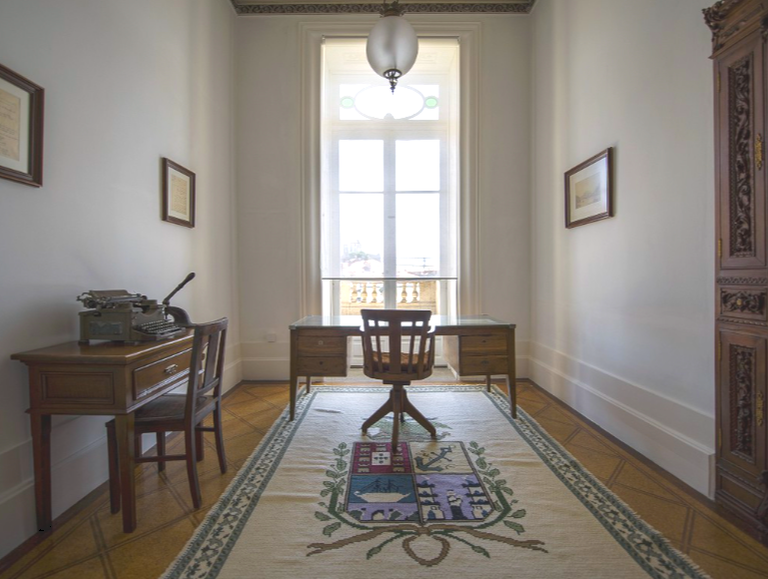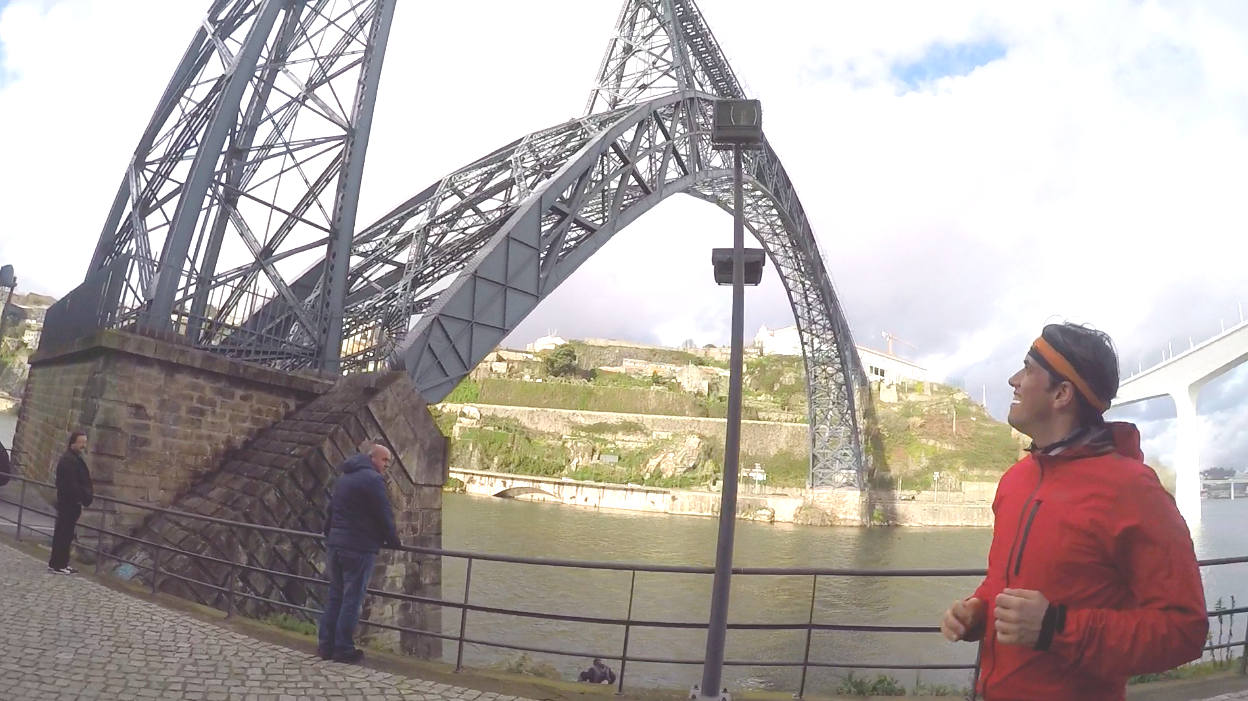|
est.reading time: 6 min.
100 years ago
On December 27, 1923, France lost an illustrious figure who had left an indelible mark on the world – Gustave Eiffel. More than just an engineer, he was a visionary, and a leader of industry, who transformed the landscape of engineering with his designs and innovative techniques.
While the iconic Eiffel Tower stands tall as a a beacon of progress and a testament to his genius, Eiffel's contributions extended far beyond this architectural marvel. His outstanding constructions often overshadow the very important influence Gustave Eiffel has had on Science, especially Aerodynamics. Having an educational background in engineering myself, I consider him as one of the most fascinating characters in history, of his time.
Read on to learn a couple more things about Eiffel's legacy in science - and his previous work here in Porto!
A photo stands out in Eiffel's apartment
When Eiffel built his tower in Paris, he reserved a corner, a pretty large one, for himself. He built an apartment covering 100 square meters on the upper platform of the tower, just below the campanile which crowned the tower and had it as a personal concession for 20 years...
Essentially, he had the best view in Paris! On one of the walls he hanged a special photo of a project that earned him his first world record. (source) Summer of 1877 - a new structure over the Douro river with Eiffel's signature
As in most of Gustave’s projects, Maria Pia bridge in Porto was built with extreme precision, designed and produced part by part in his workshops to be then only assembled on the building site, with technical innovations that he himself developed and improved upon – such as the use of cantilevers and the “hurling” of the central span between two existing bridge piles – this made his constructions faster to build and extremely cost effective!
August 1877 - Eiffel's beloved 'Maria Pia' bridge under construction. Photo credits: Karl Emil (Emilio) Biel
Porto's Maria Pia bridge held the record for the largest span, for seven years.
Fun fact: the bridge is 353meters long - it is in fact longer than the height of the Eiffel tower. Eiffel certainly had an eye for offices
Before he even dreamed of building a tower in Paris, Eiffel chose an excellent place to work while working in our city. In Porto and the north of Portugal, the engineer-entrepreneur spent more than two years of his life, working, and left numerous public works, some of which are still in operation.
Eiffel's office is one of the points of interest in the Porto merchants association's HQ, Palácio da Bolsa -one of the most visited monuments here in Porto - you can see it in our video here (YouTube video link). So, when did the Science come in Eiffel's life?
In 2017, during a guided tour, a runner from New Zealand mentioned the fact that Eiffel, despite his background in chemistry and work in metalic constructions, had also worked extensively on the development of Aerodynamics and Meteorology. (I had no idea...as a running tour guide, I am constantly learning new things, also from the people I run with) :)
Surprisingly (to me) and with the help of Dr. Google the Browser, I found out that Eiffel had began his work on aerodynamics in a laboratory at the foot of his tower, having conducted some of his experiments ON the tower itself. After building a meteorological observatory on top of the Eiffel Tower and doing research throughout the country, he then passionately moved on to the issues of Aerodynamics, one of his favourite research topics - in fact, Gustave Eiffel have had to fight against the power of the wind in all his constructions! In 1909, he built himself a wind tunnel where he carried out the first tests on the wing designs of aviation pioneers like Wright or Blériot, and on scale model air planes designed by Nieuport or Levasseur.
Later he also got to work with the French car manufacturer Peugeot to enhance the performance of its EX-5 racing car model - with success! The improved aerodynamics ensured the top place at the 1919's Indianapolis 500mile race podium, the first race post-world war I.
Eiffel later moved his 'soufflerie' to the number 67 of Rue Boileau (less than 3kms aways from its original location, in Champs de Mars) where it is still active nowadays, involved in studies of buildings and urbanism - see: www.aerodynamiqueeiffel.fr
What made Eiffel switch from iron Construction to Science?
During the 59 years he worked on metal constructions, Eiffel built 500+ structures in 30 different countries in 5 different continents.
However, towards the end of his career, Gustave Eiffel found himself involved, very unintentionally, with the setbacks of the Panama Canal, for which he had designed the giant locks. Hurt by the groundless accusations against him – press and politicians were pressing for scapegoats, after the financial collapse of the massive Panama canal project – he chose to sell all his shares and retire from his company. Justice would later fully clear him of any responsibilities concerning that case. From the 1890's on and until his death, Eiffel decides to dedicate himself to scientific research, the results of which he shared free of charge with the rest of the scientific community.
(In this last photo):
Boris, a runner from Germany, admiring Eiffel's iconic structure in Porto during his running tour. You can do the same - just let us know which day (booking page) - oh, and don't forget to mention your love for history - or engineering - we've got your covered! Don't forget to share this blog post with your running/history buff friends:
0 Comments
Your comment will be posted after it is approved.
Leave a Reply. |
Autor/Author
Sérgio é o fundador da Porto Running Tours, corre regularmente desde 1999 e desde 2015 que guia visitas em corrida na Invicta enquanto revela algumas das suas mais fascinantes histórias. Categories
All
Archives
March 2024
PORTO RUNNING TOURSWe're passionate about running and passionate about Porto! REVIEWSWE'RE LISTED ONYour gateway to fun and unique running tours worldwide.
We practice sustainable tourism!
|
EMAIL: info(at)portorunningtours.com
MOBILE/WHATSAPP👆(tap to message)
+351 91 460 10 10
(English/Português)
9.00AM-5.00PM Local Time - Portugal - GMT+00
Porto Running Tours is a
locally owned micro-business,
providing authentic running experiences
in Porto since 2015
locally owned micro-business,
providing authentic running experiences
in Porto since 2015
customer love on-LINE >
Take their word for it:
We practice sustainable tourism. Book directly with us!
member of the worldwide community:
RUNNINGTOURS.NET
RUNNINGTOURS.NET
JOIN OUR COLLEAGUES
AROUND THE WORLD
FOR A RUNNING TOUR!
AROUND THE WORLD
FOR A RUNNING TOUR!
RNAAT nº1410/2017 TURISMO DE PORTUGAL
This website is mobile friendly,IOS and ANDROID! © COPYRIGHT PORTO RUNNING TOURS 2023.
TODOS OS DIREITOS RESERVADOS /ALL RIGHTS RESERVED.
TODOS OS DIREITOS RESERVADOS /ALL RIGHTS RESERVED.















 RSS Feed
RSS Feed



